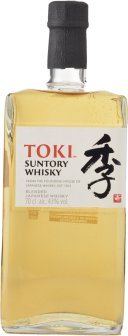Koyomi Single Distilled Shochu
A classic Honkaku (authentic) shochu, Koyomi Shochu is produced using Japanese methods and brought to you by the master distillers at Beam Suntory in Japan. Single distilled from barley and koji, this shochu retains its unique flavour which means that you can enjoy it straight up, over ice or the Japanese way as a Chu-Hi (shochu highball).
Choya Nankobai Genshu
Highly tartness with rich taste coming from pure umeshu.
Tengumai Yamahai Jikomi Junmai Sake
Founded in 1823, Tengumai Shuzo is located facing the Japan Sea in the Ishikawa prefecture of central Japan. They produce traditional Yamahai sake using Gohyakumangoku rice. Tasting note: Shows a bright, medium lemon colour in the glass. Not an overly aromatic nose, but what's there works well, showing ripe green fruit of nashi pear and custard apple, yellow melon, and notes of yoghurt and rich rice. On the palate this sake has great texture and umami feel, while showing flavours of green melon, honey, meringue and yoghurt. The richness and weight on the palate work well here. Serve cold or warm. Alc 15.9% SMV: +4 Rice Polishing: 60%
Tohoku Meijyo Hatsumago JunmaiDaiginjo Kagaboshi
"Kagaboshi" is a dialect unique to the Shonai region of Yamagata Prefecture, where the brewery is located, and means "dazzling" and "I can't keep my eyes open because it shines." Junmai Daiginjo made with 100% Dewa Sansan, named after the shining rice. The junmai daiginjo brewed this winter has a deep and mellow taste after being squeezed and aged quietly in the brewery. The fragrance is not too gorgeous and has a well-balanced volume as Junmai Daiginjo. Of course, this sake is also kimoto-zukuri, which can be said to be the symbol of the Hatsumago. When raw, it may be heavy, but it is a sake that goes well with food without any dullness. If you drink it chilled, be careful not to let it cool too much, as it will have a slightly bitter taste. The refreshing scent of ginjo and the swelled taste are in perfect harmony. It's perfect for delicious autumn dishes.
Maruishi Jozo Miwaku No Mango
Maruishi Jozo Miwaku No Mango is a blend of Junmai sake and mango. Distilled with Daichi No Kaze rice, this sake liqueur has a powerful palate of sweet mango. Best enjoyed chilled, on the rocks, with soda.
Kiuchi Umeshu
Produced with distilled Hitachino Nest Beer, the Kiuchi Shuzo Umeshu, has the rich, luscious flavours of Ume fruits. Fresh aromas of hops and a slightly sweet and pinch of sour palate.
Suntory Toki Blended Whisky Non-Vintage 0
Koyomi Shochu
Product Description Koyomi Shochu is a masterfully crafted, single-distilled spirit that embodies the authentic craftsmanship of traditional Japanese production methods. Produced by the renowned master distillers at Beam Suntory, this Honkaku (authentic) shochu is made from premium barley and koji, retaining its unique flavours and versatility. With its fresh, clean, and green character, Koyomi is perfect for enjoying in simple highballs, cocktails, or sipped straight over ice. This versatile spirit allows the natural, vibrant flavours of the ingredients to shine through, making it an excellent choice for pairing with fresh, zesty ingredients in cocktails or classic Chu-Hi (shochu highball). Whether enjoyed in its purest form or mixed into creative beverages, Koyomi Shochu delivers a smooth, balanced drinking experience that embodies the true essence of Japanese craftsmanship. Tasting Notes NOSE – Fresh & Inviting A delicate aroma of green grass and light barley creates a fresh and crisp nose, inviting you into the drink with a clean, airy profile. TASTE – Smooth & Crisp Koyomi presents a smooth, clean flavour with subtle barley sweetness, accompanied by a refreshing, slightly earthy note. Its delicate green character and light body make for a well-balanced and easy-drinking experience. FINISH – Refreshing & Clean The finish is crisp, with a clean, refreshing sensation that lingers just enough to leave you wanting more. The smoothness and natural flavours persist, creating a well-rounded and satisfying finish. Style - Shochu Country - Japan Bottle Size - 700ml ABV - 25%
Choya Shiso
CHOYA SHISO is a new version of CHOYA made from Ume fruits, cane spirit, sugar and Shiso which is Japanese basil Perilla. It gives a lightly herb & spicy flavor on Choya Classic taste as well as beautiful red color.
Choya Extra Year
Using 100% Japanese premium plum fruits called Nankobai from Kishu, Wakayama, this is a premium Umeshu with the taste of richness, depth & elegance. Also the color is more golden & amber. As a aperitif or a desert, you can always enjoy CHOYA Extra Years with over ice.









